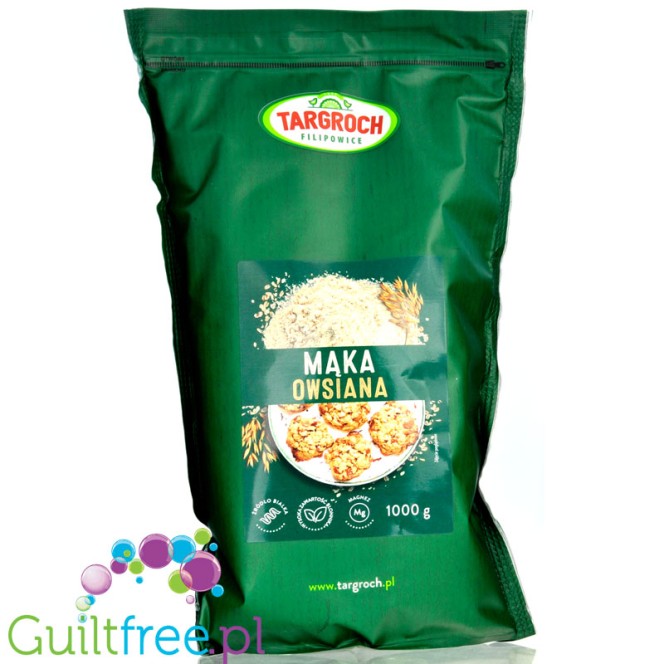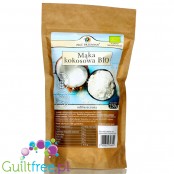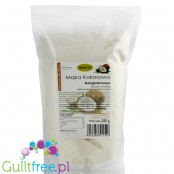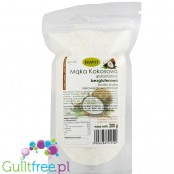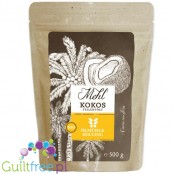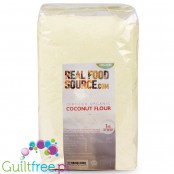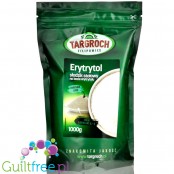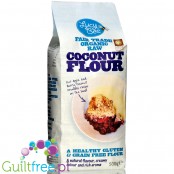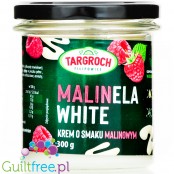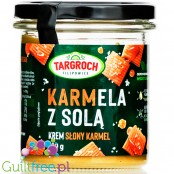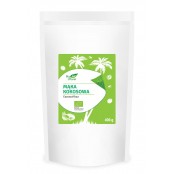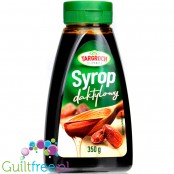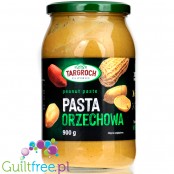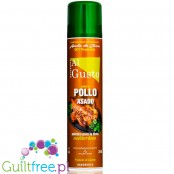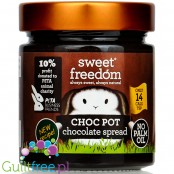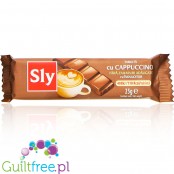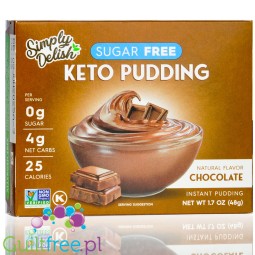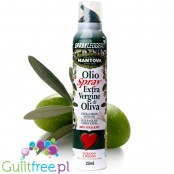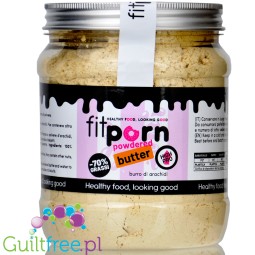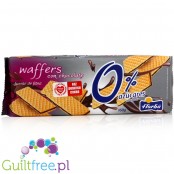Targroch Oat flour 1kg - high fiber content
Oat flour is primarily a lot of dietary fiber. In addition, oat flour contains healthy fats, antioxidants and valuable minerals - with magnesium at the forefront. It also contains iron, zinc, calcium and vitamins B and E. It is also worth mentioning the amino acids - avenins.
Oat flour will work in all kinds of baked goods, especially sweet ones, thanks to its slightly nutty aroma. It is also often used in dishes of vegans and people allergic to dairy. Thanks to its strong binding properties, oat flour gives the right texture to plant-based baked goods or pancakes, replacing eggs. You can safely use it on its own or mix it with other grains.
Nutritional values of oatmeal:
- vitamin E - is necessary to maintain fertility, delays the aging process of the skin
- copper - is important for teeth and bones, participates in the production of skin, hair and eye pigment, supports the nervous system and participates in the production of red blood cells
- selenium - removes free radicals, protecting against cancer, supports the functioning of the thyroid gland and increases the body's immunity
- magnesium - supports the nervous system, improves concentration and cognitive functions, strengthens bones and teeth
- manganese - is a component of many tissues. It is responsible for the proper functioning of the nervous system and improves fertility. It is also an essential component of bones
- thiamine - prevents weakness or digestive system disorders, relieves pain and accelerates wound healing
- riboflavin - supports the immune, nervous and digestive systems, indicated especially during periods of increased effort, growth or pregnancy
- niacin - supports the proper functioning of the human brain and nervous system
- fiber; Oat flour is rich in dietary fiber, both soluble and insoluble. Fiber helps regulate digestion, keeps you feeling full and supports digestive health.
- Oatmeal can help lower bad cholesterol (LDL) and regulate blood pressure due to its soluble fiber content. This may help to reduce the risk of cardiovascular disease
- low glycemic index: oatmeal has a relatively low glycemic index, which means it causes a relatively slow and steady rise in blood sugar levels. This is beneficial for people with diabetes or who are seeking to regulate blood sugar levels.
How to use oatmeal in healthy cooking and fit recipes
Oat flour can be used in the preparation of various dishes and baked goods, such as bread, pancakes, muffins, cakes and oatmeal. It gives dishes a delicate nutty flavor and texture.
Oatmeal is a versatile ingredient that can be used in a variety of healthy recipes:
- Oat Pancakes: Make a healthy breakfast pancake or snack by combining oatmeal with eggs, banana, yogurt and other ingredients to your taste. You can add fruit, nuts, or spices like cinnamon for extra flavor.
- Oat Muffins: Use oat flour to make low-sugar, high-fiber muffins. Add fresh fruit, such as blueberries or apples, and nuts, and use natural sweeteners such as honey or date puree instead of sugar.
- Oat bread: Oat flour can be the basis for homemade, healthy bread. You can combine it with other flours, such as whole wheat flour, spelled flour or almond flour, to get the right consistency. Add chia seeds, flaxseeds or pumpkin seeds to enrich the bread with nutrients.
- Oatmeal Cookies: Make tasty and healthy cookies by combining oat flour with peanut butter, honey, egg and other favorite toppings such as coconut flakes, dried fruit or chocolate chips. You can also try no-bake cookie recipes.
- Oatmeal: Use oatmeal to make a filling oatmeal for breakfast. Cook oatmeal in milk (or a plant-based drink), adding fruit, seeds, nuts, and spices like cinnamon or vanilla to add flavor.
These are just a few examples of how oatmeal can be used in healthy recipes. You can experiment by adding it to other dishes, such as chicken or cutlet coatings, smoothies, protein shakes or salads. Remember that oat flour tends to absorb liquids, so recipes often recommend using smaller amounts of oat flour than traditional wheat flour. Although oats themselves do not contain gluten, due to the processing conditions, oat flour is not a gluten-free product, however recipes using it require the use of additional 'gluing' ingredients such as xanthan gum or guar gum or linseed.
Nutrition Facts
Targroch oatmeal
Net weight: 1kg
Ingredients: oat flour 100%
Allergens: may contain nuts, soy, sesame
Nutritional values in 100g: energy value 391.0kcal / 1642.0kJ, fats 9.1g (including saturated fats 1.6g), carbohydrates 59.2g (including sugars 0.8g), fiber 6.5g, protein 14, 7g, salt 0.0g
Nutritional values in 50g: energy value 195.5kcal / 821.0kJ, fats 4.5g (including saturated fats 0.8g), carbohydrates 29.6g (including sugars 0.4g), fiber 3.2g, protein 7, 3g, salt 0.0g
Store in a dry and dark place in a tightly closed container.

